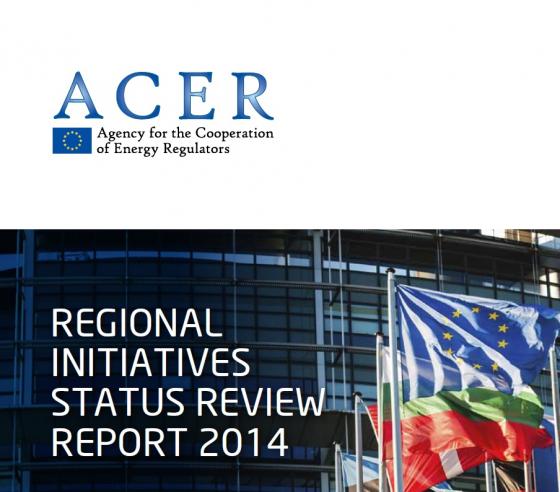10.2.2015
ACER review of 2014 regional initiatives for energy market integration highlights coupling from the Strait of Gibraltar to the Barents Sea

Important milestones such as the implementation of the European Price Coupling linking the electricity markets from the Strait of Gibraltar to the Barents Sea are highlighted in the last edition of the ACER Regional Initiatives report on progress made on regional and cross-regional market integration last year. The report also describes obstacles faced in 2014 and challenges ahead. ACER, which is in charge of coordinating this ‘bottom-up’ approach to market integration, has produced the report in line with its Annual Work Programme to assess the progress achieved with the specific project-approach in the electricity and gas fields. Being 2014 the deadline set the Council of the EU for the completion of the
Internal Energy Market, this report observes the progress achieved as
well as the difficulties in order to draw useful lessons for the coming
implementation of the binding Network Codes. This move from the
voluntary to the mandatory process will mark a new era in which the
Agency and the National Regulatory Authorities have additional tools for
achieving the Internal Energy market.
Electricity: progress made and challenges for the sector
Electricity: progress made and challenges for the sector
- Early 2014, National Regulatory Authorities (NRAs) sent a letter of comfort to the Cross-Border Intraday project parties to enable them to sign the Early Start Agreement with the selected service provider. Despite the European Commission’s involvement, the project progressed behind schedule. Due to the ongoing delays and increasing disappointment from stakeholders, the European Commission set the end of February 2015 as a deadline for the potential launch of alternative initiatives. - Along with improvements at a local level, the creation of a wide allocation platform from the merger between the Central Auction Office and the Capacity Allocation Service Company and the drafting of a European set of rules for allocating long-term transmission rights progressed as planned. The ongoing process plans the submission of the European set of rules to NRAs by mid-2015 to enter into force for the 2016 auctions. - The Central-West Europe project for the flow-based capacity calculation project was eventually postponed from November 2014 to March 2015 while encouraging progress was noted in the Central-East Europe region following the signing of the Memorandum of Understanding. - All stakeholders support the selected cross-border balancing pilot projects as they enable experience to be gained and the requirements for a relevant target model o be further defined. However, transparency and project structure must be improved. Gas: status of the regional initiatives - The GRI remains focused on the areas where it brings relevant achievements in terms of progress towards the Internal Energy Market (IEM): The Agency’s vision for the GRI is that it should continue to promote and facilitate the early implementation of the Network Codes (NCs), foster the integration of markets by monitoring and facilitating market integration projects and carry out other projects and activities at a national and regional level in line with the new regional Work Plans for 2015. - The early implementation of NCs is more important than ever in view of the first Codes becoming binding in 2015: the GRI has been instrumental in identifying pilot projects at an early stage at a (sub)regional level and bringing together NRAs, TSOs and stakeholders to plan the steps needed to apply the NC provisions in the regions, thereby ensuring cross-border coordination. Work on the early implementation of the Capacity Allocation Mechanism (CAM) NC has continued in 2014, facilitated by the Agency and ENTSOG through the CAM Roadmap, and work has also started with regard to balancing. Early implementation work could also start on the forthcoming NC on Interoperability and Data Exchange and, once it is mature enough, on the NC on Tariffs. - In 2014, the South and SSE gas regions started to plan the upcoming work for the next few years in their respective regions. The final Work Plan 2015–2016 for the South region was adopted on 3 November 2014 and the Work Plan 2015–2018 for the SSE region is expected to be adopted over the coming months. These Work Plans will become the new reference for regional work in 2015 and subsequent years. - After an attempt to reshape the SSE region, NRAs are instead outlining new priority areas and activities in the new SSE Work Plan 2015–2018 and are introducing several changes to the organisational structure and working arrangements of the region. In October 2014, the Madrid Forum invited the European Commission and the Agency to ensure that a potential new geographical set-up of the gas regions, also including EnC Contracting Parties, guarantees the necessary cooperation and flexibility for the regions. In relation to cooperation with the EnC, the Agency took further steps in 2014 to strengthen this by having representatives from the EnC Secretariat participating in meetings of the GRI Coordination group and the GRI SSE region, and vice versa. Find out more about the gas projects here Find out more about the electricity projects here- The implementation of the European Price Coupling (EPC) reached several important milestones with first, the go-live of the North-West Europe Market Coupling on 4 February, quickly followed by the extension to the Iberian market on 13 May. On 19 November, the project for coupling the markets of the Czech Republic, Slovakia, Hungary and Romania with the EPC solution went live successfully. Early 2015, the EPC should cover the northern Italian borders. All remaining non coupled borders will have to follow quickly to comply with the Capacity Allocation and Congestion Management Guideline to come into force this summer.


